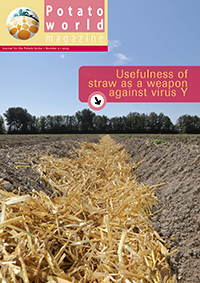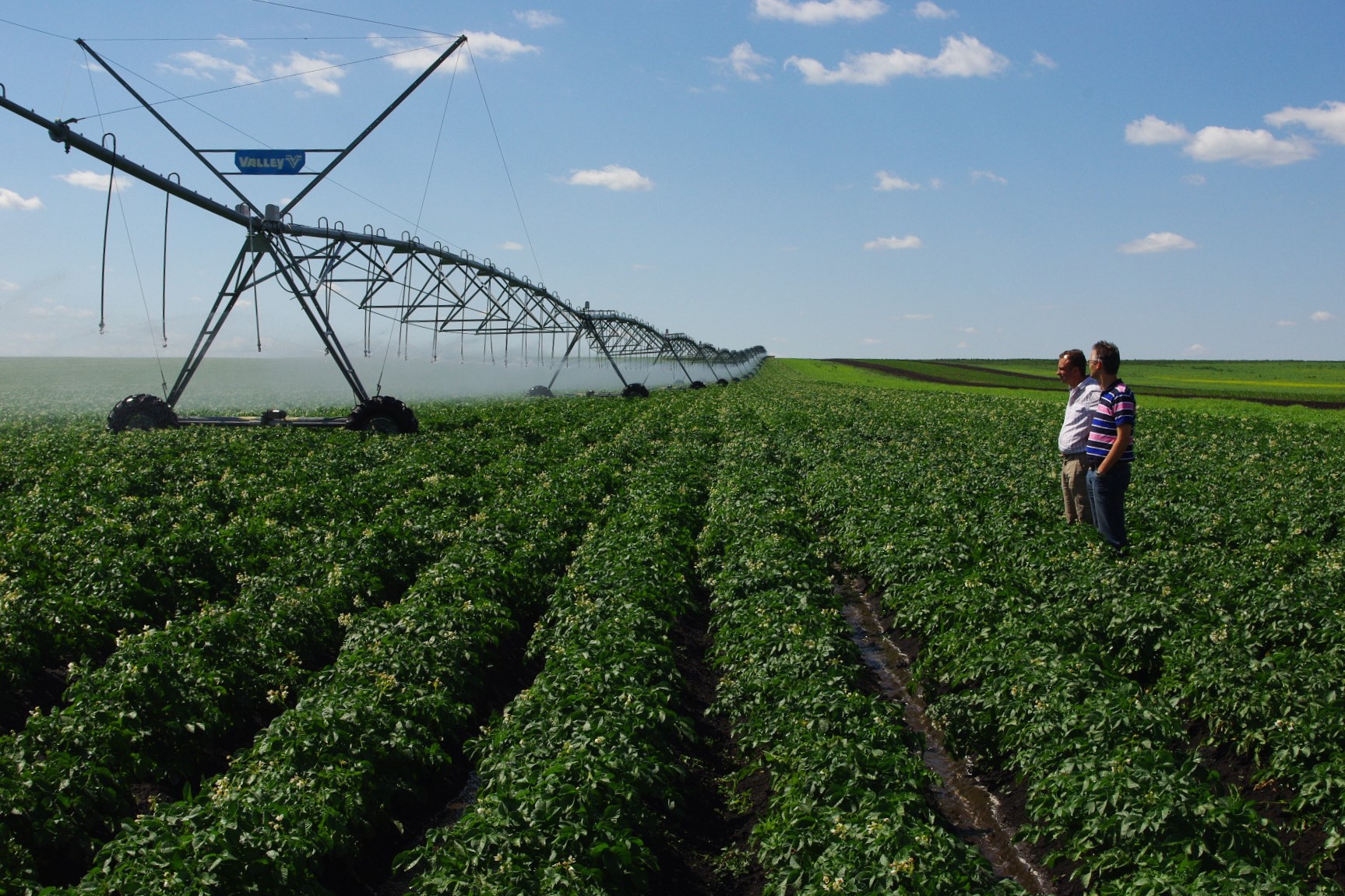Already a subscriber? Activate your premium account

Potatoworld Magazine

Irrigation with sprinklers, rain guns, center pivots or linear systems – as opposed to furrow and drip irrigation delivering water under the canopy – distributes water overhead, much like natural rainfall does.
There are two types of sprinkler systems, one is capital-intensive with aluminum alloy or PVC main pipes and the other portable lateral pipes connected to sprinklers that cover circles with a diameter of 10 meters. A less expensive one employed in developing countries such as in the highlands of Central Vietnam is with a PVC pipe buried in the soil and smaller lateral hoses connected to small sprinklers that cover circles of only a few meters.
All sprinklers have in common that they wet circles in which the center receives more water than the sides and that for proper irrigation there is a need to overlap. With wind the distribution becomes more uneven. The irrigation efficiency of sprinkler irrigation is around 80 percent, which is less than that of drip irrigation because there is more evaporation from the wet leaves and somewhat more drainage due to overlap. Disturbance by wind is an even greater problem for the rain gun, an apparatus that doses a large amount of water through a single sprinkler that moves back and forth at high pressure of around 5 bars.
The gun in most cases is towed through the field by a hose connected to a reel that winds the hose (a drag-hose system). The pressure at the pump feeding the tube at the reel is higher than at the gun, around 8 bars as pressure is lost in the long hose. As the amount of energy it costs to dispense one cubic meter depends on the pressure of its release, the gun costs more energy by far than the pivot which in energy terms again is costlier than drip irrigation. Furrow irrigation takes the least energy but the most water. The irrigation efficiency of the rain gun is less than that of sprinklers because the water is exposed more to air causing more evaporation and there is overlap or lack of it, especially under windy conditions.
A center-pivot (pictured at the top of this blog) or linear irrigation system or waterwheel is a pipe supported by towers on electric motor propelled wheels. It dispenses its water through nozzles one or two meter above the crop, at the end of the tube on the outside of the circle there is a rain gun like nozzle, but smaller. The system receives the water from the pivot, the center, around which it turns and so creates crop circles. When not centered, the wheels follow a parallel path, move linearly or laterally, the so-called side-roll irrigation system. The center pivots are popular in deserts and semi-arid flat environments where land is less scarce than water such as in the North West of the USA, the northern plains of Mexico, Brazil, Argentina, South Africa and New Zealand. In this last case, linear irrigation is also very common due to the layout of the fields and water availability. Pivots are less common in temperate environments with relatively much rain and thus expensive land, divided into small plots such as most of rain-fed agriculture in Eurasia. At the water inlet liquid fertilizers may be inserted for fertigation. Especially a continuous supply of nitrogen throughout the season keeps the foliage of the potato crop green and active, even in relatively hot environments. The irrigation efficiency of center pivots is around 80 percent.
Events
©2015 - 2024 Potatoworld | Webdesign and realisation COMMPRO